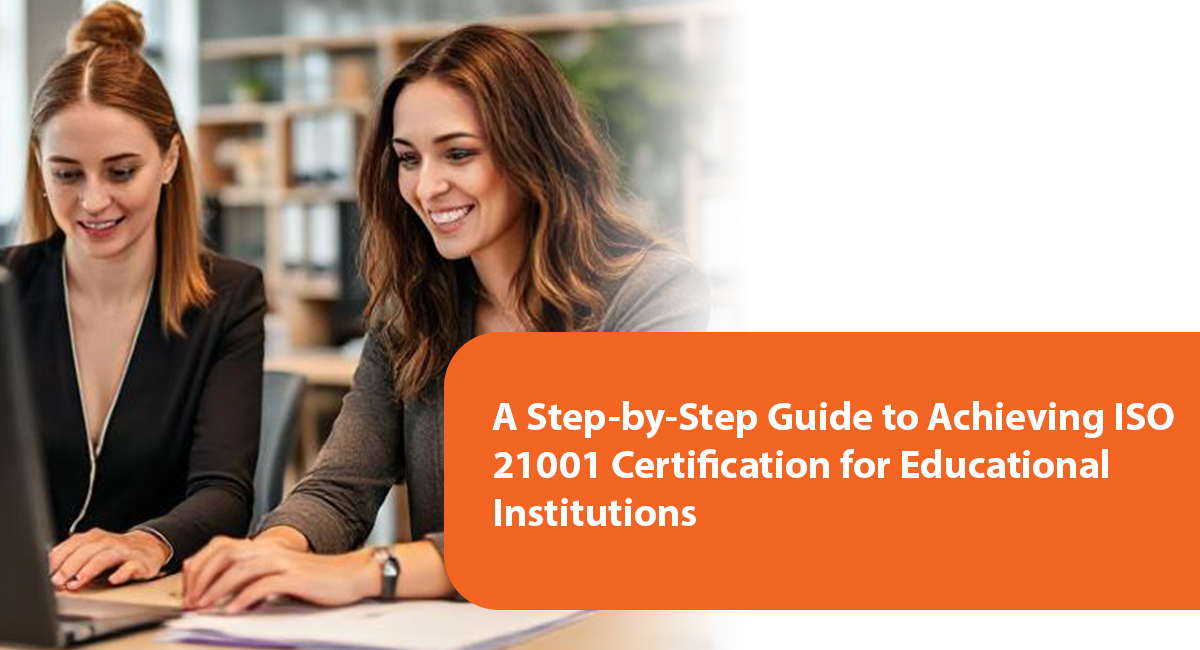We are changing our name from Blue Wolf to QIC Global
We are changing our name from Blue Wolf to QIC Global

Published on: October 29, 2025
The education industry is competitive, and all institutions are always seeking means of enhancing their teaching standards, student satisfaction, and efficiency in their administration. An effective approach is to file for the ISO 21001 certification for educational institutions specifically. This global standard assists institutions in developing a management framework that facilitates learner-based practices, constant enhancement, and inclusiveness.
The guide offers a step-by-step account of the way through which educational institutions can successfully and effectively attain the ISO 21001 certification.
The ISO 21001: 2018 is an internationally accepted standard of Educational Organizations Management Systems (EOMS). It applies to any institution that provides education or training, of whichever type, size, or method of delivery. The certification also ensures that the institution aligns its operations to best practices internationally, with a focus on transparency, accountability, and satisfaction of the stakeholders.
The attainment of ISO 21001 certification indicates a high level of commitment to quality education. It helps institutions:
The institutions should initially become conversant with the ISO 21001:2018 standard and its provisions. The areas are leadership, planning, support, operation, performance evaluation, and improvement. The knowledge of such requirements gives a clear picture of how the management system should be put into practice.
Gap analysis will be used to determine the places in which the current processes in the institution are below the ISO 21001 requirements. This action can be taken as a starting point for improvement and planning.
| Key Area | Current Practice | Gaps Identified | Improvement Needed |
| Leadership & Planning | Strategic objectives are partially aligned | Lack of measurable learning outcomes | Define clear KPIs for educational goals |
| Student Feedback | Collected occasionally | No systematic analysis | Implement a structured feedback process |
| Documentation | Manual records maintained | No centralized system | Digitize and standardize documentation |
Following the gap analysis, the institutions are expected to develop an implementation plan that details the schedules, tasks, and resources. The strategy should include developing new policies, training of the staff, documentation management, and communication systems to make sure they comply with the ISO 21001 requirements.
There should be training for staff and faculty about the essence of ISO 21001 certification and how they can apply it. Awareness programs will motivate attendance and contribute to the creation of a culture of quality and continuous improvement within the department.
This step entails the implementation of the planned systems and processes. The colleges and universities are expected to keep track of the performance of the EOMS, maintain proper documentation, and review performance periodically. The audits should also be done internally to confirm compliance and the areas where improvement could be made.
An internal audit determines the correspondence of the adopted management system to ISO 21001 requirements. The results of the audit, feedback, and performance metrics are then assessed by the management review to implement the required improvements before the external audit.
An external audit performed by a certification body takes place in two stages:
In case of all the requirements, the institution obtains ISO 21001 certification that is valid in a period of three years, and the certification is regularly scrutinized using surveillance audits to confirm that the institution is in compliance.
Educational institutions have to ensure that their management systems are examined and enhanced on a continuous basis once certified. Internal audits, performance analysis, and feedback from the stakeholders should be consistent to keep the certification and ensure long-lasting quality improvement.
| Benefit | Description |
| Enhanced Learning Outcomes | Focuses on meeting learner needs and improving satisfaction. |
| Improved Operational Efficiency | Streamlines processes and resource management. |
| Global Recognition | Boosts credibility and competitive advantage. |
| Continuous Improvement | Encourages consistent evaluation and development. |
| Inclusivity and Accessibility | Supports fair and inclusive learning environments. |
In order to improve quality, accountability, and student satisfaction, the implementation of ISO 21001 certificationfor educational institutions is a strategic investment for those who want to be certified. With a systematic method, such as beginning with the requirements level so as to pass the certification audit, the institutions can have an opportunity to show their devotion to providing higher education and ongoing development. To have a credible and professional experience of certification, institutions may associate with QIC Global, which is a reputable certification education provider that has made the certification process smooth and transparent.
ISO 21001 is a globally acknowledged standard that specifies requirements for a management system for educational organizations to enhance learning outcomes and overall quality.
Every educational institution, including schools, universities, training centers, and e-learning platforms, can apply for certification.
The duration differs based on the size of the institution and readiness. On average, it can take anywhere from 3 to 6 months to complete the certification.
No, it is voluntary.
This certification is valid for three years, with periodic surveillance audits to maintain compliance and continuous improvement.